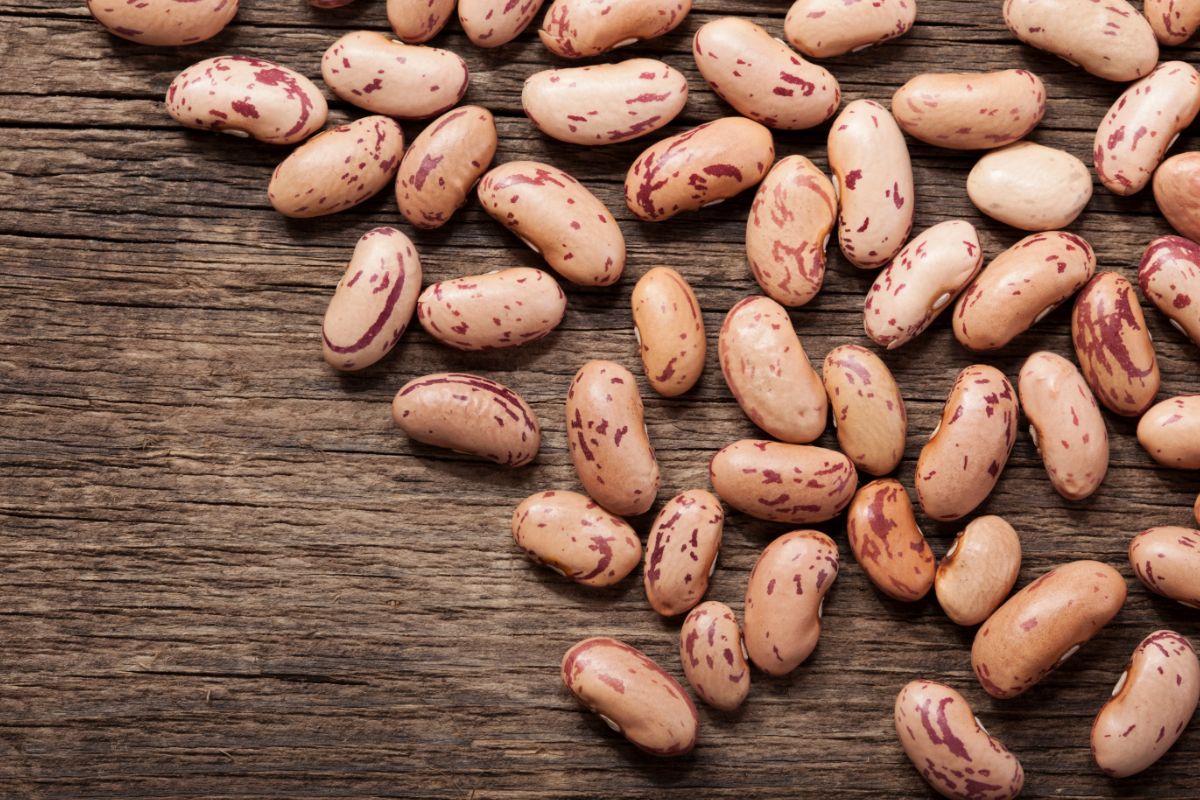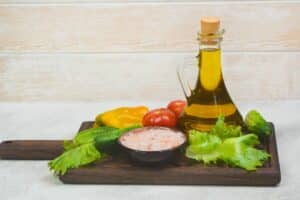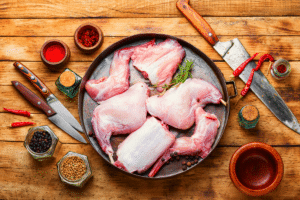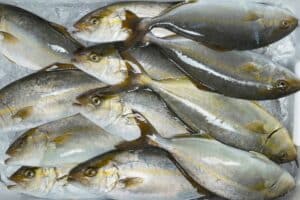When it comes to healthy eating and a well-balanced diet, including a wide range of veggies is essential. Vegetables provide a wealth of nutrients, vitamins, and minerals that contribute to our overall well-being.

If you’re someone who loves exploring new flavors and wants to add a wider variety of vegetables to their diet, a fun way to do this is to choose vegetables that begin with the same letter.
Everyone knows a few vegetables that begin with the letter “P,” but you might be surprised at how many there are!
In this article, we will present a list of vegetables that start with the letter “P.” We will explore a range of options, from familiar favorites like peas and potatoes to lesser-known gems such as parsnips and purslane.
No matter what type of vegetable you’re looking for, there is sure to be one that starts with the letter “P!”
Let’s get started.
1. Pak Choy
Also known as bok choy, Chinese celery cabbage, pok choi, Brassica rapa subsp. Chinensis
Pak choy is a leafy vegetable that looks a little like celery but is shorter and wider. It has thick stalks that are white and large green leaves. It’s commonly used in Chinese cooking and in dishes such as salads, soups, stir-fries, and dumplings.
2. Paracress
Also known as toothache plant, Szechuan buttons, and Acmella oleracea
Technically, paracress is a form of flowering herb but parts of the plant are often used as vegetables. The leaves of the plant can be eaten in a similar manner to the leaves of vegetables such as cabbage or celery.
If they’re boiled, they have a relatively mild flavor. They can be used in salads, soup, and as a side with meat.
3. Parsnips
Also known as Pastinaca sativa
Closely related to carrots, parsnips are lengthy, pale roots that have a delicately nutty flavor. They possess both pale skin and flesh, and parsnips harvested after the last winter frosts tend to offer a sweeter taste.
Their sweetness makes them suitable not only for savory preparations but also for sweet recipes. Parsnips can be eaten roasted or spiced but also make great ingredients in soups, casseroles, or even cakes.
4. Peas
Also known as Pisum sativum
Peas are botanically classified as fruit, although they are commonly treated as a vegetable for cooking purposes. They grow in edible pods, containing small orbs that are also edible.
Peas can be bought in fresh, dried, and frozen forms, making them very versatile!
When it comes to preparing peas as a side dish, they can be boiled or steamed. Peas are also commonly added as ingredients to dishes such as soups, pasta, pies, or curries.
5. Pearl Onions
Also known as silverskin, button onions, Allium ampeloprasum
Pearl onions are small varieties of bulb onions and share many characteristics with leeks. Unlike other onions, they have a singular storage leaf instead of several. They can be eaten sauteed with balsamic glaze, but are also great as ingredients in stews and soups.
6. Peppers
Also known as bell peppers, paprika, sweet pepper, Capsicum annuum
Peppers come in various colors including green, yellow, orange, and red. Among these, green peppers are known for their bitterness, while the sweetness intensifies as peppers transition from yellow to orange and finally to red.
Peppers can be used raw in salads or cooked in a variety of dishes from different cuisines. They’re also popular when served stuffed with other ingredients.
7. Pigeon Peas
Also known as arhar, tur dahl, gungo peas, red gram, Cajanus cajan
These legumes are especially popular throughout Asia, Africa, and Latin America. They look similar to black-eyed peas as they are lightly colored and have small brown spots.
They’re a great source of protein and are commonly sold fresh, dried, or as flour. They can be cooked into curries, soups, or stews, or served as a side dish.
8. Pinto Beans
Also known as Phaseolus vulgaris
These are another type of legume and are especially common in Latin American cuisine. When pinto beans are dry they have a brown and speckled appearance but after being cooked, they become brownish-pink.
Their most common uses are as fillings in burritos or as part of refried beans. When cooked, they can be eaten whole or mashed.
9. Pignut
Also known as arnut, cipernut, jarnut, hawknut, earth chestnut, kippernut, groundnut, Conopodium majus
This is a small perennial herb that is known by many different names! Its underground part is often treated and eaten as a vegetable so we’re including it on this list.
It’s very similar to a chestnut and although it can be eaten raw, it’s more commonly cooked and can be used in curries and other dishes. Consider it similar to a giant chickpea!
10. Plum Tomatoes
Also known as processing tomato, paste tomato, Roma, San Maranzo
Plum tomatoes are a form of tomato but they aren’t as spherical as the average tomato. Instead, they’re longer and more cylindrical, with fewer seeds.
They’re commonly used for making homemade pastes or sauces and are usually the base of store-bought pastes and sauces as well.
11. Potatoes
Also known as Solanum tuberosum
Potatoes are arguably the most well-known and widely used of all of the vegetables on this list. This root vegetable and tuber is a staple of many diets around the world and has over 4,000 different varieties.
Potatoes were originally native to the Americas but are now grown almost everywhere.
It’s not advisable to eat potatoes raw. They can be cooked in a variety of different ways and eaten relatively plain, as well as part of other dishes. They can be eaten with or without their skin and are a great source of carbohydrates.
12. Potato Onions
Also known as Egyptian onion, underground onion, multiplier onion, Allium cepa
This is a member of the onion family and is relatively similar to the shallot. It reproduces by bulb instead of seed, which makes it different from most other types of onion. The individual bulbs are smaller than regular onions at less than two inches wide as well.
The leaves of potato onions can be used in a similar way to green onions and the bulbs can be used in recipes that need onions that aren’t sweet.
13. Prairie Turnip
Also known as timpsula, breadroot, prairie potato, tipsin, Ornithogalum pyrenaicum
This is a perennial plant that has pretty purple flowers when it is in bloom. It has an edible and starchy root that can be used and eaten in the same way as many root vegetables.
After peeling, the root can be eaten raw but it is also commonly ground into flour. The flour can then be used for sweet desserts or fry bread.
14. Pumpkin
Also known as Cucurbita (genus)
Pumpkins are a colorful variety of squash that you will see throughout the United States during the fall. They come in a variety of colors with the most common color being orange, but you will also frequently see white and green varieties.
The skin, flesh, and seeds of a pumpkin are all edible and they’re used as decorations throughout the fall and Halloween seasons.
Popular dishes that use pumpkin include pie, soup, and a variety of desserts. The seeds are delicious when toasted and many drinks use pumpkin spice to add some fall flavor.
15. Purple Sprouting Broccoli
Also known as sprouting broccoli, Brassica oleracea
Sprouting broccoli is one of the three main common varieties of broccoli and is available in both purple and white varieties. The purple flowers, stem, and leaves of the broccoli are all edible and they can be prepared in a variety of different ways.
Broccoli tastes great when it is only slightly seasoned but can also be included in a number of dishes such as soup, stir-fries, and casseroles.
16. Purple Sweet Potatoes
Also known as Okinawan sweet potato, beni-imo, Ipomoea batatas
Despite their name sweet potatoes are not that closely related. They’re both root vegetables and tubers but belong to different families.
Sweet potatoes come in a variety of different colors but one of the most interesting and unique is the purple variety, which is a popular ingredient in Japanese and especially Okinawan cooking.
17. Purple Asparagus
Also known as Asparagus officinalis
For our last vegetable that starts with “P,” we have purple asparagus. This is a variety of asparagus that instead of being the more common green color is instead colored purple.
It is a long and pointy stem that can be grilled, roasted, or steamed. Asparagus can be eaten with minimal seasoning but is also commonly included as an ingredient in soups, stews, or quiche.
Final Thoughts
In this article, we introduced 17 vegetables that start with the letter “P.” We also included how each vegetable is commonly cooked and eaten.






